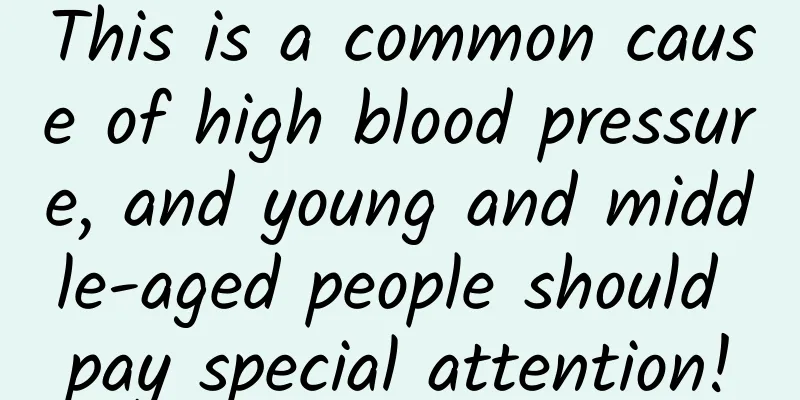Down syndrome baby B-ultrasound five major characteristics

|
During pregnancy, in order to promptly grasp the growth and development of the fetus, most pregnant women go to the hospital regularly for prenatal check-ups, and the most common examination item for prenatal check-ups is B-ultrasound. So, what are the B-ultrasound characteristics of Down syndrome babies? I will give you a detailed introduction below. I hope that the following introduction will be helpful to pregnant women. Down syndrome baby B-ultrasound five major characteristics Down syndrome babies may mainly show symptoms of intellectual disabilities, language, visual and auditory system disorders, posture disorders, tooth growth and development disorders, and facial function problems. As soon as a newborn baby is born, it can be determined from his appearance whether he is a Down syndrome baby. The most obvious feature is the wide distance between the eyes. However, it is difficult to diagnose based on appearance alone, and sex chromosome screening should be done. Symptoms of Down syndrome babies: 1. Intellectual disability: Among all children with Down syndrome, about 1/4 have normal IQ, about 1/2 have mild or mild-to-moderate IQ deficiency, and about 1/4 have moderate to severe IQ deficiency. 2. Language, visual and auditory system disorders: Most children with Down syndrome may have varying degrees of language delay, some of which are manifested as difficulty in language expression or word formation, some as unclear pronunciation or stuttering, and some even as aphasia. Some children are accompanied by myopia or strabismus, among which strabismus is the most common, and hearing loss is more common in athetoid Down syndrome. Children with Down syndrome often have difficulty identifying the rhythm of sounds. 3. Posture disorders: Children with Down syndrome have abnormal body posture and poor stability. Their postures are weird and different from side to side when exercising or standing still. 4. Dental growth disorders: Most of the teeth of children with Down syndrome are underdeveloped, the teeth are loose and easy to decay, and the incidence of various dental diseases is higher than that of normal children. 5. Facial function problems: Some children with Down syndrome have significant spasms or incoordinated contraction of the facial and tongue muscles. This can cause children to have difficulty biting and swallowing, difficulty closing their mouth, and drooling. What are the fetal B-ultrasound characteristics of Down syndrome babies? Although B-ultrasound is the main way to rule out fetal deformities, it is important to ensure timely treatment and immediate correction. However, this does not mean that B-ultrasound examination can completely replace Down syndrome screening, because some Down syndrome babies do not have any clinical defects when they are born, but will gradually show IQ defects during the growth stage. Therefore, these are difficult to detect through B-ultrasound, but they can be discovered through Down syndrome screening. By testing the blood of pregnant women, the risk of the fetus suffering from Down syndrome can be determined and all preventive measures can be taken. It is not difficult to see that B-ultrasound can only clearly show the growth and development of the fetus's skin, but cannot check the fetus's IQ. Therefore, pregnant women not only need to do B-ultrasound examination, but it is also necessary to do Down syndrome screening. What is the difference between Down syndrome screening and B-ultrasound? The diagnosis scope of B-ultrasound is wider than that of Down syndrome screening. It can measure the gestational age of the fetus, analyze the growth and development of the fetus, and screen for fatal malformations of the fetus (anencephaly, encephaly, open spina bifida, etc.). Down syndrome screening is mainly used to select key patients. B-ultrasound and Down syndrome screening are both one of the main methods for screening fetal abnormalities during pregnancy, but the difference between the two is still very large. The biggest difference between the two is the scope of fetal abnormality screening. The above is a detailed introduction to the B-ultrasound characteristics of fetuses with Down syndrome. I hope it can help everyone. I would like to remind you that female friends should go to the hospital for prenatal check-ups on time during pregnancy. During the check-up, they should not just do B-ultrasound examinations, but also do relevant tests according to the doctor's advice to determine whether the fetus has any deformities. |
<<: What is the reason for spotting after more than one month of pregnancy?
>>: What is a normal hcg level at 6 weeks?
Recommend
What to do when you get angry? Recommend several simple fire-reducing soups
Getting angry is a very common phenomenon in life...
What are some daily weight loss tips?
First paragraph: In today's fast-paced life, ...
Is there any estrogen after menopause?
No matter when there is less estrogen in the huma...
What should women do if their breasts have sagged?
The problems that women fear the most are body sh...
Are eggs afraid of high temperatures from moxibustion?
Moxibustion is a traditional health care method, ...
When is menopause in women
In fact, many female friends don’t know when thei...
LH in early pregnancy
After pregnancy, a woman's body will undergo ...
Are there any dangers of eyebrow tattooing? What should you pay attention to when getting eyebrow tattooing?
Nowadays, many beauties have their eyebrows tatto...
Quick method to stop menstrual bleeding
Many women hope that their menstrual period will ...
Is moderate inflammation serious?
Women should regularly undergo gynecological exam...
World Osteoporosis Day丨“Brittle bones” are not just a problem for the elderly. How to prevent and treat osteoporosis?
Did you break your bones just by moving a flower ...
What are the reasons for prolonged menstruation?
As women, we have menstruation every month. Menst...
What is the best time for women to have an IUD?
IUD insertion is a contraceptive method for women...
Is congenital accessory breast a genetic disease?
In our lives, genetic diseases are very common, a...
Is it true that uterine fibroids fall off after taking Chinese medicine?
Uterine fibroids are a common clinical disease, w...









